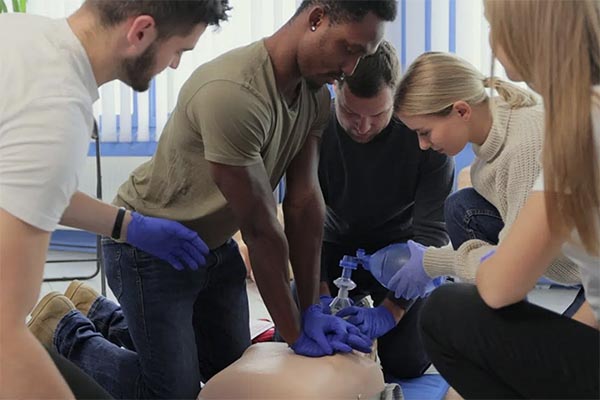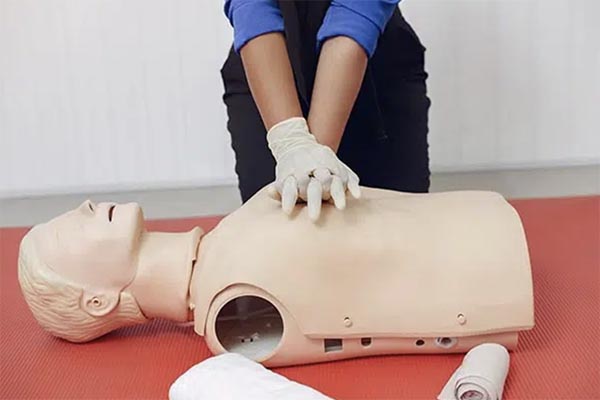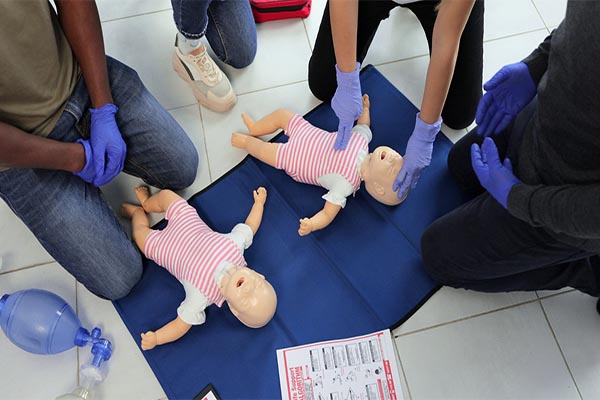
In today’s fast-paced world, emergencies can happen when we least expect them. Whether it’s a minor scrape or a more serious injury, knowing how to respond quickly and effectively can make all the difference. First aid training is an invaluable skill set that every family should consider acquiring. Not only does it equip you with the knowledge to handle emergencies, but it also brings peace of mind knowing you can act confidently when needed. In this article, we’ll delve into the benefits of first aid training for families and why it should be a priority for everyone.
First aid training involves learning the basic skills needed to assist someone who is injured or suddenly taken ill. The training covers a variety of situations, from treating cuts and bruises to handling more serious conditions like choking or cardiac arrest. Courses are designed to be accessible for all, making it possible for both adults and children to learn these essential skills.

Accidents and emergencies are unpredictable. They can happen at home, at the park, or while on vacation. Having the knowledge and skills to handle these situations can potentially save lives. Emergency training helps individuals stay calm and focused, ensuring they can provide the necessary care until professional help arrives. For families, this means having the confidence to deal with situations that may arise with children, elderly relatives, or even neighbors.
One of the primary benefits of first aid training is the ability to respond immediately to injuries. In many cases, the first few minutes after an accident are crucial. Knowing how to apply a bandage, perform CPR, or stop bleeding can prevent a situation from worsening and increase the chances of a positive outcome.
Proper first aid can significantly reduce the recovery time for many injuries. By providing immediate care, you can prevent complications and promote faster healing. For instance, applying ice to a sprain or elevating a limb can minimize swelling and pain, leading to quicker recovery.
First aid training instills confidence in individuals to act during emergencies. This confidence is particularly beneficial for families, as it ensures that adults and older children can step up and provide the necessary assistance. When everyone knows what to do, it reduces panic and confusion, leading to more effective responses.
Through first aid training, families become more aware of safety hazards in their environment. This awareness helps in preventing accidents before they happen. For example, understanding the risks of leaving sharp objects within a child’s reach or recognizing the signs of heat exhaustion on a hot day can lead to safer practices at home and outdoors.
Every household is likely to encounter minor cuts and scrapes, especially with active children. First aid training teaches how to clean wounds properly and apply bandages to prevent infection.
Choking is a common risk, particularly among young children. Training provides the skills to perform back blows and abdominal thrusts, which can quickly clear the airway and save a life.
Shock is a life-threatening condition that can occur after severe injury or trauma. First aid courses cover how to recognize the symptoms of shock and provide the necessary care to stabilize the individual until emergency services arrive.

While adults often take the lead in first aid training, involving children can be beneficial. Many organizations offer courses designed for younger audiences, making it possible for children to learn and understand basic skills. Encouraging them to participate fosters responsibility and enhances their ability to contribute in an emergency.
First aid skills can fade over time if not practiced regularly. Families should consider attending refresher courses periodically to keep their knowledge and skills sharp. This ongoing commitment ensures that everyone remains prepared and confident.
First aid training is an essential skill that offers numerous benefits for families. From handling minor injuries to managing life-threatening situations, the knowledge gained from these courses can make a significant difference. By prioritizing first aid training, families not only enhance their safety but also gain the confidence to protect and care for each other in times of need. Make the decision today to empower your family with the gift of first aid training.
Ready to empower yourself and your family with lifesaving skills? Don’t wait for an emergency to happen. Enroll in CPR and First Aid classes with CPR Classes Near Me. Our comprehensive courses are designed to equip you with the knowledge and confidence needed to respond to emergencies effectively. Whether you’re a parent, caregiver, or simply someone who wants to make a difference, learning CPR and First Aid can save lives. Sign up today and take the first step towards a safer, more prepared life.
Our primary goal is to ensure that you receive a top-quality CPR/First Aid certification. With our in-person training in Austin, you can learn CPR and BLS in just one class. Your presence is all that’s needed to continue with your lesson! During your session, you will complete all the live-training components necessary to ensure you receive your AHA Healthcare Provider certification card.
Our CPR Classes in Austin are discounted to $59.95 (saving you $20), and our CPR + First Aid Class is offered at $79.95 (also saving you $20). When looking for CPR Classes, ensure to check for the American Heart Association seal. Other sites might seem cheaper but frequently lack the official training credentials demanded by employers.
Upon successful completion of the course, you will obtain a CPR certification that is valid for two years. The AHA CPR certification is recognized with the highest acceptance rate among employers nationwide.
Indeed! Enroll in any CPR Certification Austin BLS course to extend your certification for an additional two years. The in-person BLS course and the Renewal Class are identical.
Anyone capable of completing the course independently should consider pursuing CPR training and CPR Certification. There is no minimum age restriction for obtaining a CPR certification in Austin through the American Heart Association (AHA)..
CPR training needs to be carried out in person to guarantee its effectiveness. Our experienced instructors offer an engaging and dynamic learning experience. Typically, employers do not recognize CPR certifications that are obtained solely through online courses.
All authorized American Heart Association training centers are obligated to display the entire video. After a three-hour session with CPR Classes Near Me Austin, your BLS CPR eCard will be promptly issued by the instructor on the same day!